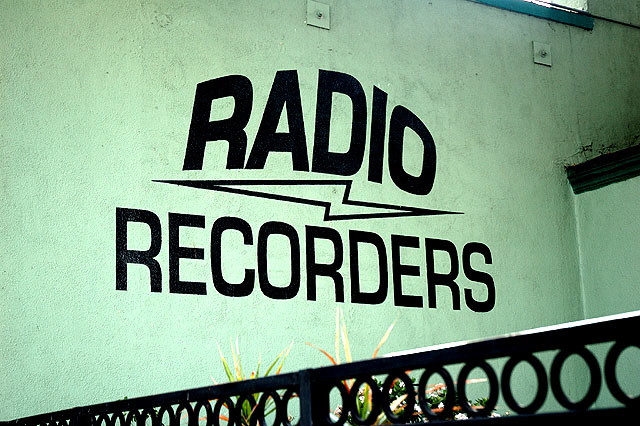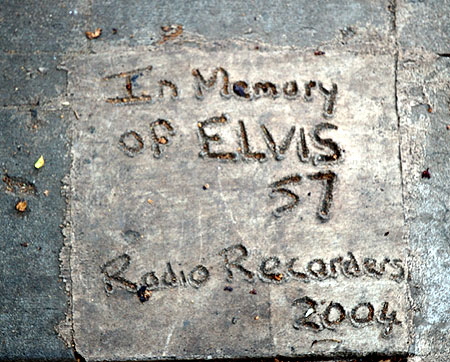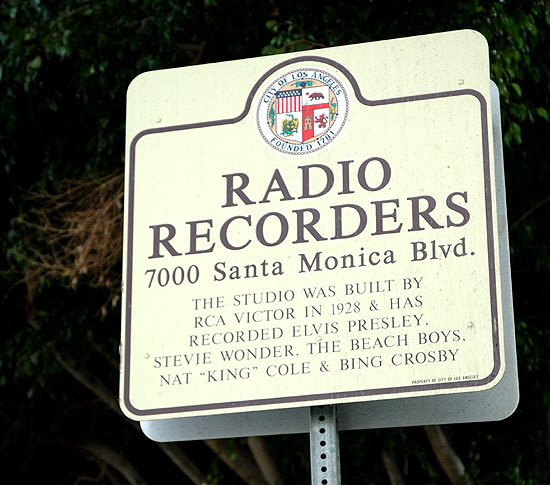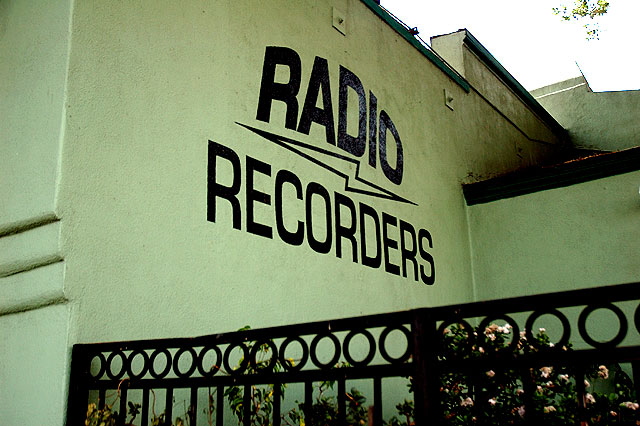|
Just Above Sunset |
|||
|
|
|||
|
|
|
|
The Hidden Home of America's Music |
|
So where did Bing Crosby record "White Christmas" and Elvis Presley record "Jailhouse Rock" and Sam Cooke record "You Send Me" and so on? Behind this green door. |
|||
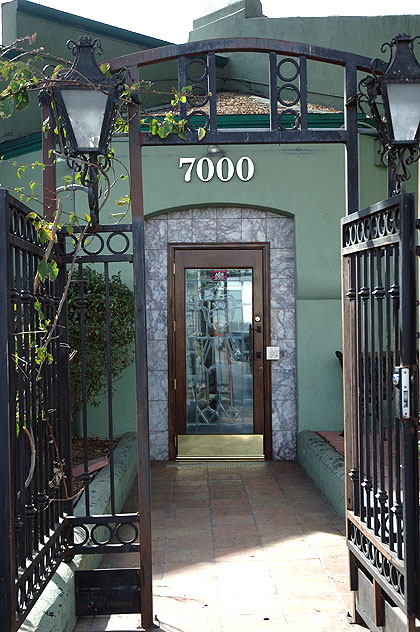 |
|||
|
Not many people outside the business read the trade journal Mix, but in last October's "L.A. Grapevine" section, Bud Scoppa noted this - At Radio Recorders, located on the corner of Santa Monica Boulevard and Orange Avenue, an ongoing effort is underway to restore the oldest studio in Hollywood - the birthplace of Bobby Darin's "Mack the Knife," Sam Cooke's "You Send Me," the Beach Boys' "Help Me, Rhonda," Bing Crosby's "White Christmas" and Elvis Presley's early RCA sides - to its former glory. Clearly, this is an ambitious undertaking, as the operation attempts to compete with the numerous nearby high-profile facilities. On one side of the nicely landscaped entrance to the building, which was built by RCA Victor in 1928, a recently erected sign denotes Radio Recorders' status as a historic landmark; on the other, a homeless person sleeps on a bus stop bench - the contrast is a microcosm of the challenge facing partners Paul Schwartz (who has operated the studio for the past two decades), Michael Dumas and Pride Hutchison. Drummer/producer Hutchison and Dumas, who has done Dwight Yoakam's live sound for years, were scouting studios to work in when they came upon the building, then called Studio 56, and offered to enter into a partnership with Schwartz, who welcomed the infusion of cash, energy and vision. They new co-owners began the renovation in 2000, installing the requisite Neve console (a VRP60) in Studio A, turning Studio B into a Pro Tools suite with a Sony DMX-R100, putting a cherried-out Trident MTA-90 in C and setting up the cavernous Studio E, where all of the above-mentioned classics had been recorded, as well as a soundstage for video shoots and live recordings. The partners refaced the walls and floors, being careful not to tamper with the details that make the facility unique, and brought in their ample collections of vintage gear. It's in a nasty area of town - warehouses and grit, small post-production outfits and sad little houses here and there, in the flats south of Sunset. But it's there. |
